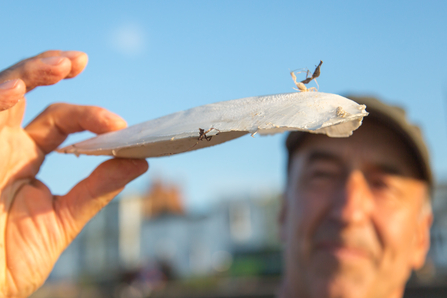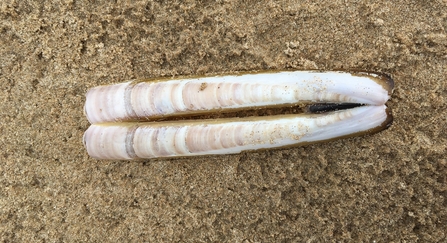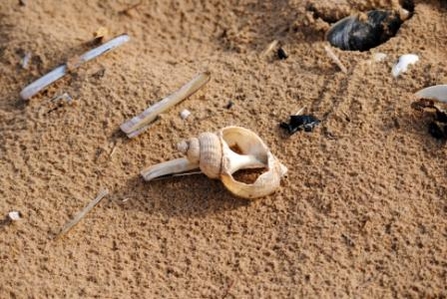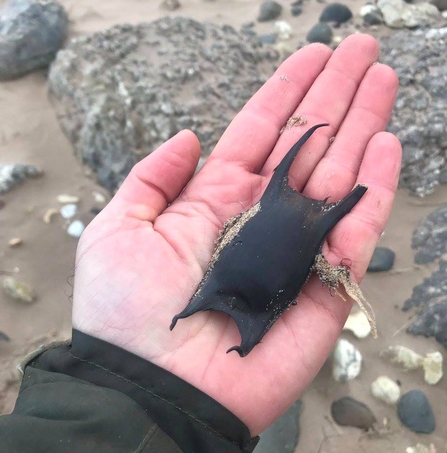
Mermaid's purse ©Ronald Surgenor
1 - Mermaid's purse
These are actually egg cases and belong to sharks and rays! Made of keratin, the same as hair and fingernails, these fascinating purses are where the embryo grows. After the egg hatches the cases are often washed up on the beach. You might spot them amongst the seaweed. Sailors used to think that shark egg cases washed up after storms were the mislaid handbags of mermaids, hence the name ‘mermaid’s purse’.
2 - Cuttlefish bones
This is the lightweight inner part of the cuttlefish that helps give cuttlefish their soft body structure and also enables them to float. When they die the ‘cuttle bones’ often wash up on the beach.
3 - Razor shell
These long narrow shells are a common sight on our shores, especially after storms, but the animals themselves live buried in the sand. Razor clams live buried in the sand around the low tide mark and on the seabed. They dig themselves into the sand using their strong muscular "foot".
4 - Whelk shell
The common whelk lives on sandy seabeds below the low tide mark. It is the largest sea snail found in our seas and the largest snail shell you are likely to find on our beaches! They are carnivorous and feed on worms and other molluscs, often using the edge of their own shell to prize open other shells. It also scavenges for carrion, which it finds by smell...
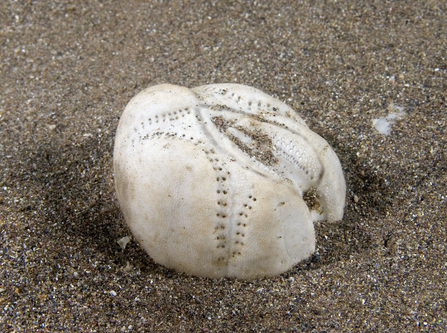
Sea potato shell ©Paul Naylor www.marinephoto.co.uk
5 - Sea potato
Not really a potato. The sea potato is a type of sea urchin that lives buried in the sand. Their empty shells are often found washed up on the beach. When alive, it is covered in fine, beige spines that give it a furry appearance.
Please do not remove anything from the beach that may be alive or may act as a home for wildlife.

